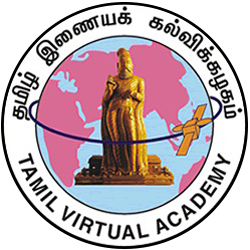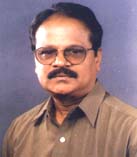Primary tabs
-
LESSON - 1
p10241 Plays based on Ancient Epics
This lesson gives you all the information about plays
based on the Puraanaas or ancient epics.
Long ago, all the arts were used to propagate bhakthi or
devotion. Hence, ancient epics manifested themselves in the
form of art. These epics formed the basis of dance dramas,
operas, discourses and so on. Playwrights adapted the epics
to suit their creative skills. In course of time, plays which
were as natural and realistic as possible, were produced.
Thus, plays based on ancient epics were written both to be
staged and read.
During the 19th century and earlier, musical plays were
written. These were in the form of Kuravanchi Naadakangal,
Nondinaadagankal and Keerthanai Naadakankal.
Among the pioneers of Tamil drama, the most notable
names are those of Sankaradas Swamigal, C.Kannaiah and
Nawab Rajamanickam. Sankaradas Swamigal was responsible
for the setting up of professional acting troupes. Earlier
plays included the three elements of dance, music and
dialogues. It was Sankaradas Swamigal who removed the
dance element from stage plays. He gave greater importance
to music. Through his dialogues, he gave the people messages
that were useful and relevant to life. His plays served
to teach the uneducated common man, and provide him with
religious knowledge. Philosophical ideas were given to the
people in easy-to-understand songs. The Camaraca Sarmaarkk
Naadaka Sabai which he set up in 1914, served to
introduce, later, M.G.Ramachandran, P.U.Chinnappa, M.R..Radha,
N.S.Krishnan, Sahasranaamam and others. All of them later
rose to great heights of glory.
During the freedom struggle, stage plays were written with
the specific purpose of instilling nationalism and patriotism
in the minds of the audience. After independence, the same
plays were used to propagate Dravidian ideologies.
Thus, drama became an important instrument not only of
entertainment but also of enlightenment.
This lesson tells you all about the origin of stage plays,
their types and their growth.


